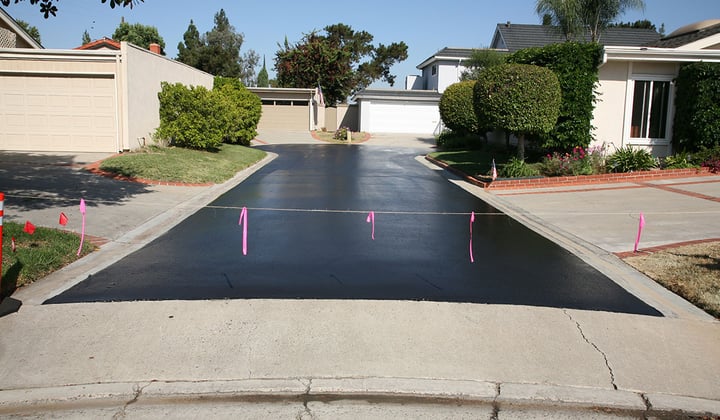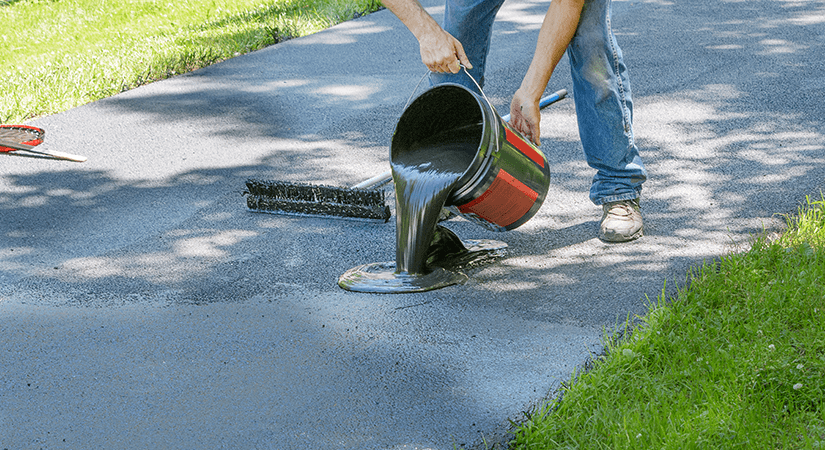Unleash the Potential: Regrading and Asphalt Sealing for Commercial Rooms
Unleash the Potential: Regrading and Asphalt Sealing for Commercial Rooms
Blog Article
Warm Mix Asphalt: A Lasting Service for Sidewalk
Warm Mix Asphalt (HMA) has emerged as a leading sustainable option for sidewalk remedies, supplying a myriad of ecological advantages and cutting-edge innovations. Its ability to lower and reuse products power usage presents an engaging instance for its adoption in roadway building jobs. Additionally, the long-term performance and longevity of HMA make it a recommended choice for facilities development. As the demand for environmentally friendly construction techniques grows, exploring the subtleties of HMA's sustainability can give useful understandings right into the future of sidewalk remedies.
Ecological Benefits of Hot Mix Asphalt

Additionally, Warm Mix Asphalt aids to alleviate urban warm island effects. Its dark shade takes in sunshine, minimizing the quantity of heat reflected back right into the environment contrasted to lighter-colored pavements. This can reduce ambient temperature levels in metropolitan areas, reducing the need for air conditioning and eventually reducing energy intake.
In enhancement, Hot Mix Asphalt contributes to improved stormwater management. Its porous nature enables water to recharge and infiltrate the pavement groundwater supplies, lowering runoff and the danger of flooding. These environmental benefits make Hot Mix Asphalt a sustainable choice for leading highways and roads.
Power Efficiency in HMA Production
Is energy efficiency an essential factor in the production of Warm Mix Asphalt (HMA)? Definitely. Energy plays a considerable function in the manufacturing of HMA, influencing both cost and environmental sustainability. One key aspect of power performance in HMA production is the usage of warm mix asphalt (WMA) technologies (regrading). WMA enables the blending and positioning of asphalt at lower temperatures compared to standard hot mix asphalt, resulting in decreased energy intake throughout production. This process not just decreases gas usage but additionally reduces greenhouse gas discharges, making it a much more eco-friendly alternative.
Furthermore, advancements in plant modern technologies have caused even more energy-efficient HMA production processes. Modern plants are created with features like recycled asphalt pavement (RAP) handling abilities, efficient heater systems, and improved insulation, all contributing to power savings. By maximizing energy use in HMA manufacturing, the industry can lower its carbon footprint while keeping premium sidewalk products. Energy performance is, for that reason, an important factor to consider in ensuring the sustainability of Warm Mix Asphalt production.
Recyclability of Warm Mix Asphalt
The recyclability of Hot Mix Asphalt (HMA) is an essential facet of its sustainability and long-term environmental effect. HMA is one of one of the most recycled products in the United States, with over 100 million heaps of redeemed asphalt pavement (RAP) being reused each year in new pavement building. Reusing HMA supplies numerous ecological benefits, such as minimizing the demand for virgin materials, decreasing power consumption during production, and decreasing the quantity of waste sent to garbage dumps.
The process of reusing HMA involves crushing the existing sidewalk, crushing it right into smaller items, and mixing it with brand-new aggregate and asphalt binder to develop a recycled mix. Overall, the recyclability of HMA plays a substantial duty in promoting sustainable techniques within the pavement sector.

Long-Term Efficiency of HMA
Asphalt sidewalks show durability and resilience over a prolonged period, reflecting the long-term performance of Hot Mix Asphalt (HMA) The longevity of HMA can be attributed to its ability to stand up to hefty traffic lots, harsh weather problems, and the impacts of aging. Researches have revealed that well-designed and appropriately company website created HMA pavements can last for 20 years or even more with normal upkeep. The secret to maximizing the long-lasting performance of HMA Related Site hinges on making use of high-grade products, complying with finest methods in building, and carrying out reliable maintenance methods. Proper drain, routine evaluations, and prompt repair work are crucial for maintaining the architectural honesty of HMA pavements over time. In addition, innovations in HMA modern technology, such as making use of polymer-modified binders and warm mix asphalt, have actually additionally enhanced the toughness and durability of HMA pavements. By focusing on quality construction and upkeep practices, HMA remains to confirm itself as a cost-efficient and sustainable remedy for resilient pavement framework.

HMA: Longevity and Sustainability
Showing both sturdiness and sustainability, Hot Mix Asphalt (HMA) has actually become a keystone in the building of resilient pavement frameworks - regrading. HMA's resilience originates from its ability to hold up against hefty tons, harsh climate condition, and high web traffic quantities, making it a reputable selection for streets, freeways, and airport paths. The make-up of HMA, which usually consists of aggregates, binder, and filler, plays an important duty in improving its longevity and resistance to tear and wear
In addition, HMA's sustainability lies in its recyclability and image source energy-efficient manufacturing procedure. The ability to reuse recovered asphalt sidewalk (RAP) in new HMA blends reduces the demand for virgin materials and decreases the ecological impact of sidewalk building and upkeep. In addition, the energy efficiency of creating HMA exists in its lower blending temperature levels contrasted to other pavement materials, causing decreased energy consumption and greenhouse gas exhausts.
Conclusion
Finally, hot mix asphalt (HMA) supplies a lasting remedy for sidewalk with its eco-friendly characteristics. HMA's recyclability, power efficiency in production, and long-term toughness make it an eco-friendly choice for road building. By preserving all-natural sources, minimizing waste, and reducing greenhouse gas discharges, HMA plays an important duty in advertising sustainability in infrastructure growth. Its capability to alleviate metropolitan heat island effects further underscores its importance in developing ecologically aware and resilient sidewalk systems.
HMA is one of the most recycled materials in the United States, with over 100 million lots of reclaimed asphalt sidewalk (RAP) being reused each year in brand-new pavement building.The process of reusing HMA involves crushing the existing pavement, squashing it into smaller pieces, and mixing it with brand-new aggregate and asphalt binder to produce a recycled mix.Asphalt sidewalks show sturdiness and resilience over an extended duration, showing the long-term performance of Hot Mix Asphalt (HMA) In addition, developments in HMA modern technology, such as the use of polymer-modified binders and cozy mix asphalt, have better improved the durability and durability of HMA sidewalks. The ability to recycle reclaimed asphalt sidewalk (RAP) in new HMA combinations reduces the demand for virgin products and minimizes the ecological effect of sidewalk construction and maintenance.
Report this page